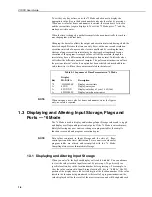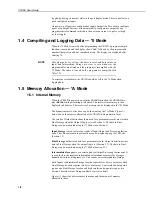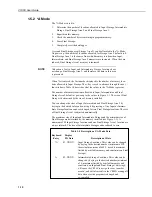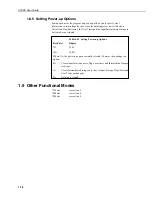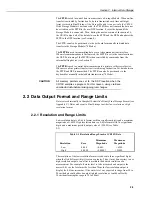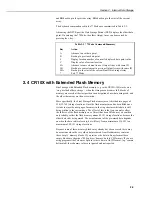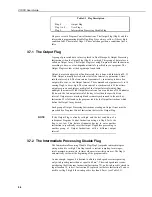
2-1
Section 2. Internal Data Storage
Final Storage is the portion of memory where the CR10X stores final processed data. It is
from Final Storage that data is transferred to your computer or external storage peripheral.
2.1 Final Storage Areas, Output Arrays and Memory
Pointers
The size of Final Storage is expressed in terms of memory locations or bytes. A
low resolution data point (four decimal characters) occupies one memory location
(two bytes), whereas a high resolution data point (five decimal characters)
requires two memory locations (four bytes). Figure 1-1 shows the default alloca-
tion of memory locations to Input, Intermediate, and the two Final Storage areas.
The *A Mode is used to reallocate memory or erase Final Storage (see Section 1).
The default size of Final Storage with standard memory is 62280 low resolution
memory locations. See section 2.4 for the CR10X with extended memory options.
Final Storage can be divided into two parts:
Final Storage Area 1
and
Final Storage Area 2
Final Storage Area 1 is the default storage area and the only one used if you do
not specifically allocate memory to Area 2.
Two Final Storage Areas can be used to:
1.
Output different data to different devices.
2.
Separate archive data from real time display data. In other words, you can
record a short time history of real time data and separately record long term,
archive data.
3.
Record both high speed data (fast recording interval) and slow data without
having the high speed data write over the slow data.
Each Final Storage Area can be represented as ring memory (see Figure 2-1) in
which the newest data is written over the oldest data.
Figure 2-1 Ring Memory Representation of Final Data Storage


